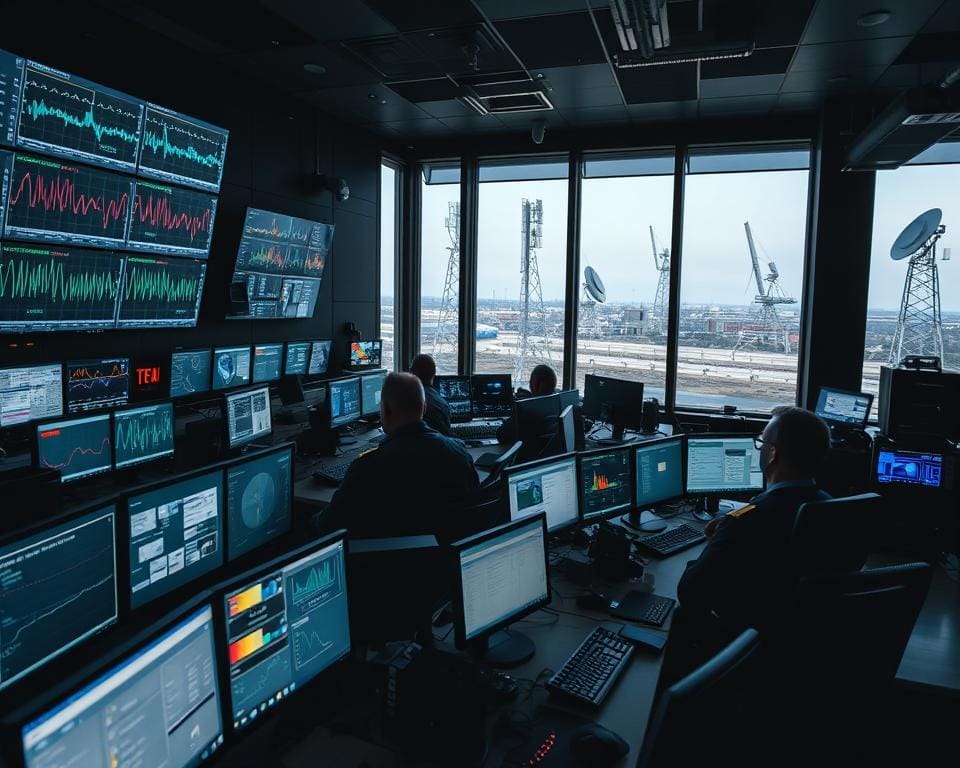SIGINT systems, or Signals Intelligence systems, are pivotal in the realm of intelligence gathering, playing a vital role in national security. These advanced systems harness the power of signals analysis to monitor, intercept, and decode communications across various electronic platforms.
By leveraging cutting-edge technologies, SIGINT systems provide critical insights into both domestic and global communication channels, allowing agencies to better understand and respond to threats. In an era where electronic support measures are constantly evolving, the adaptability and precision of SIGINT systems are essential for maintaining security and achieving operational success.
Understanding the Basics of SIGINT Systems
SIGINT, the systematic collection of intelligence derived from electronic signals, serves as a critical component in today’s complex landscape of information gathering. Within this framework, the definition of SIGINT encompasses various forms of intelligence, particularly focusing on communication intelligence, commonly referred to as COMINT systems, and electronic intelligence. The purpose of SIGINT systems is to furnish decision-makers with actionable insights, thereby enhancing national security initiatives.
Definition and Purpose of SIGINT
The definition of SIGINT reflects its dual capability in intercepting both data from telecommunications and other electronic signals. Its primary purpose lies in bolstering national security by monitoring potential threats, analysing communications, and supporting military operations. This capability is vital for the intelligence community, as it allows for an informed assessment of global dynamics and adversarial actions. In the context of SIGINT in defence, its effectiveness is demonstrated through real-time operational support and strategic foresight.
The Role of SIGINT in National Security
In the realm of national security, SIGINT systems play an unprecedented role. These systems safeguard against acts of espionage, terrorism, and cyber threats by providing insights that are critical for defensive and offensive strategies. The ability to intercept and scrutinise various signals enables governments and military forces to enhance their situational awareness and strengthen their response capabilities. Collaboration among allied nations in this field promotes a united front in addressing shared security challenges.
What Are SIGINT Systems and How Do They Work?
The technical framework of SIGINT systems combines an array of advanced technologies that facilitate effective signal processing and data interpretation. This intricate structure enables the capture and analysis of various types of signals, providing essential intelligence for national security and defence applications.
The Technical Framework Behind SIGINT Systems
In the realm of SIGINT technology, the framework consists of both hardware and software components tailored for optimal performance. Key elements include:
- Antennas that are crucial for intercepting signals from diverse frequency ranges.
- Processing units dedicated to decoding intercepted data for detailed analysis.
- Software tools that aid in interpreting and visualising the captured information.
Modern systems utilise advanced algorithms along with machine learning techniques to handle massive volumes of data efficiently. This ability to discern relevant information rapidly enhances operational effectiveness. The incorporation of artificial intelligence further enriches the system’s capacity to adapt, learning from past interceptions and identifying new patterns in the signals captured.
Types of Signals Processed by SIGINT
SIGNAL technology encompasses a variety of types of signals, primarily categorised into wideband signals and narrowband signals. Wideband signals cover extensive frequency ranges, allowing simultaneous monitoring of multiple communications. This capability proves essential for real-time intelligence collection. On the other hand, narrowband signals focus on specific frequencies, providing enhanced resolution for targeted channels.
Different decoders serve distinct frequency bands. HF decoders manage high frequency communications, while VHF decoders and UHF decoders cater to respective very high and ultra-high frequency transmissions. Each decoding type plays a vital role in ensuring comprehensive data acquisition for subsequent analysis and operational planning.
The Components of SIGINT Systems
In the world of signals intelligence, understanding the components that drive these systems is crucial for effective operations. Two key elements stand out in this field: manual signals analysis tools and digital signals decoding equipment. Each plays a unique role in enhancing the efficiency and accuracy of signals intelligence analysis.
Manual Signals Analysis Tools
Manual signals analysis tools are essential for the initial phases of signal interception. Analysts rely on these tools to conduct thorough examinations of signals, ensuring a high level of accuracy in detection and decoding. Military and intelligence organisations often favour these tools, particularly in environments where automated systems risk misreading signals due to noise or interference. With the aid of custom decoders, trained analysts can assess the nature and intent of captured signals, contributing to reliable electronics and signals analysis.
Digital Signals Decoding Equipment
Digital signals decoding equipment is now a cornerstone of modern SIGINT systems. This advanced gear combines sophisticated software and hardware to convert digital signals into user-friendly formats. Such equipment significantly enhances speed and accuracy when processing complex electronic signals. The shift from analogue to digital technology has ushered in an era of improved capabilities for signals intelligence, allowing analysts to handle larger data volumes swiftly and efficiently, ultimately leading to more actionable intelligence outcomes.
Signal Interception Techniques
Signal interception forms the backbone of effective intelligence gathering. Techniques for achieving this can be broadly classified based on the type of signals captured, particularly focusing on wideband signals and narrowband signals. Both methods have unique advantages that cater to specific operational requirements.
Wideband Signals vs Narrowband Signals
Wideband signals enable the capture of a wide spectrum of communications simultaneously. This capability is crucial for broad-spectrum monitoring, allowing interceptors to seize a multitude of interactions in real-time. In contrast, narrowband signals hone in on defined frequencies, offering detailed insights into particular channels. Understanding the distinction between these two categories is vital for strategically choosing the appropriate interception technique to uncover communication patterns effectively.
Signal Demodulation Methods
Signal demodulation plays a pivotal role in interpreting intercepted signals. This process involves transforming these signals into readable formats, which is essential for accurate analysis. Various methods exist, influenced by different modulation types, such as amplitude modulation (AM) and frequency modulation (FM). A firm grasp of these modulation techniques not only aids in selecting the right demodulation approach but also significantly enhances the quality of information extracted. Furthermore, electronic support measures bolster demodulation efforts, providing immediate intelligence feedback crucial for comprehensive analysis.
Popular SIGINT Systems in Use Today
In the rapidly evolving landscape of electronic warfare and intelligence analysis, advanced SIGINT systems have become pivotal for military and security agencies. Among these systems, Krypto500 and Krypto1000 stand out for their remarkable capabilities in processing and analysing a multitude of electronic signals. These systems are not only crucial for keeping nations secure but also embody the technological advancements driving modern intelligence operations.
Krypto500: An Overview
Krypto500 is a well-regarded SIGINT system known for its versatility in intercepting and analysing diverse electronic signals. Utilised extensively within military and intelligence communities, this system is engineered to handle various signal types efficiently. Its adaptable architecture allows for significant flexibility, enabling analysts to respond to changing signal environments effectively. With advanced filtering and decoding functions, Krypto500 provides valuable insights essential for safeguarding national security.
Krypto1000: Features and Applications
Building on the strengths of its predecessor, Krypto1000 represents a significant leap in SIGINT applications. Designed for high-demand environments, it incorporates cutting-edge technology that facilitates sophisticated signal processing. Particularly beneficial for military surveillance and cybersecurity, Krypto1000 offers enhanced algorithms that enable rapid analysis and pattern recognition. This system’s ability to decode complex signal types not only increases the efficacy of intelligence operations but also ensures that security organisations can respond swiftly and decisively to emerging threats.










